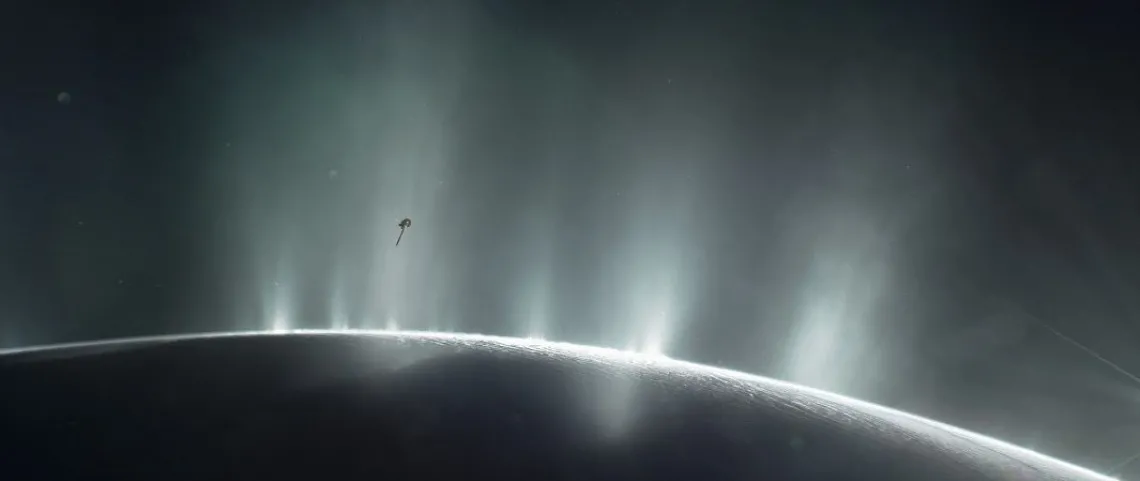Identifying Hydrothermal Activity on Icy Ocean Worlds

Artist impression of NASA's Cassini spacecraft dives through the plume of Saturn's moon Enceladus in 2015.
NASA/JPL-Caltech/Space Science Institute
NASA-supported scientists have developed a new technique that could help astrobiologists determine whether or not hydrothermal activity is occurring on icy, ocean worlds. The technique is based on the ratio of ethene to ethanol, which allows scientists to infer temperatures of the environment from which these molecules originated.
Moons in the Solar System like Enceladus and Europa harbor liquid oceans beneath their icy surfaces. If hydrothermal activity is occurring on the floor of these oceans, it could provide a source of energy for microorganisms (much like the hydrothermal systems seen at the bottom of Earth’s oceans). However, because Enceladus and Europa have thick shells of ice covering their oceans, it is difficult to take measurements that would show hydrothermal activity is occurring. The new technique could be used with remote measurements of ethanol and ethene escaping in plumes from the surface of such worlds.
Plumes of material erupting from the south pole of Enceladus were identified by the Cassini spacecraft in 2005. Since then, studies on the Enceladus plumes have suggested the presence of ethanol and ethene. However, the existing data is not precise enough to determine just how much of each molecule is present. Future missions could carry more powerful instruments that would be capable of determining their abundances, providing scientists with enough data to employ the new geothermometer technique and answer the question of whether or not icy, ocean worlds in the Solar System harbor hydrothermal activity in the dark depths of their oceans.
The study, “Ethene-ethanol ratios as potential indicators of hydrothermal activity at Enceladus, Europa, and other icy ocean worlds,” was published in the journal Icarus.
